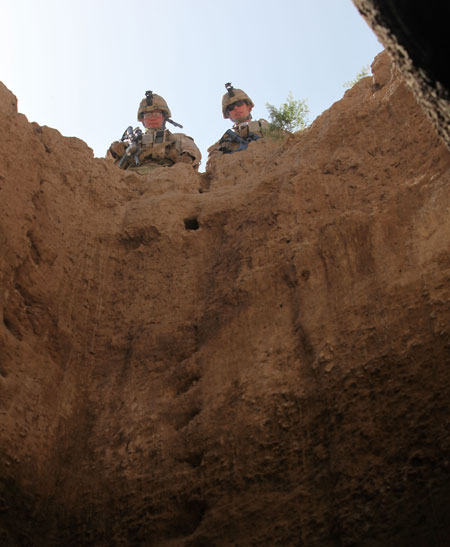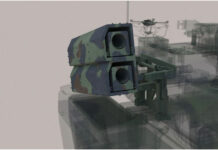
[nonmember]Underground warfare is not new. Since ancient and medieval times warfighters have often used subterranean passages, natural or man made, to gain access into enemy fortifications and escape siege. In modern times, underground warfare has been utilised primarily in guerrilla, enabling a weaker side to combat militarily superior opponent, taking advantage of tunnels, caves and other underground infrastructures prepared in advance as part of an orderly military strategy.
[nonmember]This is the abstract. The full article is available exclusively to Defense-Update members[/nonmember]

In recent years tunnels and subterranean infrastructures have been exploited by insurgents, particularly by Iraqi movements fighting the coalition forces, and later the Iraqi Army and Police, as well as Afghan rebels – Taliban, operating in Afghanistan and Northern Pakistan. India has also experienced the risks of cross-border tunnels (CBT), particularly in Kashmir. Islamic movements inspired by Al Qaeda, and Iranian backed Hezbollah in Lebanon, Hamas and Islamic Jihad in Gaza, are also relying on extensive networks of tunnels to offset the superiority of modern armies. Un Gaza, the Palestinians have built an ‘underworld’ – a tunnel complex providing commercial and military supply lines, security, command, control and communications infrastructures as well as means of attack against Israel. These tunnels are enabling small teams of terrorists to infiltrate into Israel, unbound by the physical obstacles of the border fence, ground-based surveillance and remotely controlled weapons and constant aerial surveillance.
Subterranean networks are also exploited by drug cartels in Mexico for narco-traficking into the USA. A byproduct of this network is also a flood of illegal immigrants and transport of contraband into the USA.[/nonmember]
[ismember]Underground warfare is not new. In ancient and medieval times war fighters have often used subterranean passages, natural or man made, to gain access into enemy fortifications or for defenders, reaching out water, food and war fighting supplies to sustain their forces under siege.
Subterranean passages and hideouts were widely used by Jews in Judea, during the second rebellion against the Romans, and today those facilities have become popular tourist attractions near Beit Guvrin, at the Judean piedmont area. Moving those villages underground enabled the villagers to hide from the Roman legions that moved through the area.
Tunnels were also used by the Romans as part of their siege strategy, in an effort to gain access into the sieged targets, or to topple town walls into hollow caves dug under them. Lacking explosives that would cause the necessary effect, large cavities were dug under the walls, supported by wooden poles. Burning those poles would result in caving in the walls on the surface acing into the hollow space, opening a breech in the fortifications. Similar capabilities were exploited during medieval times. Castles designers have adapted their designs to address the subterranean threat, by placing the castle’s Keep (Donjon) on solid rock or surrounded by water, eliminating underground access to the castle’s most critical defensive asset.
As gunpowder was introduced, as well as during the American Civil War, Union armies employed massive subterranean mines unsuccessfully to break up rebel defenses at Vicksberg in 1863.
In WWI tunnels were used by both sides in an effort to break the stalemate in the Western Front. at During the 1917 Battle of Messines . For more than a year, British sappers dug beneath a 15 km, long line of German trenches. The mine like passages were packed with 450 tons of explosives detonated the biggest non-nuclear explosion killing 10,000 Germans. The explosion was heard across the Channel, in London.
In WWII the Japanese army exploited the subterranean domain to survive US bombardments and hold positions in some of the strategic islands in the Pacific. Overcoming those strongholds required extensive use of firepower, flamethrowers to eliminate enemy resistance but required manual entry into each tunnel network, by ‘tunnel rats’, to finish off the enemy soldiers who survived those attacks. In the 70s the Vietkong turned to subterranean warfare to withstand US air and land attacks. They maintained their hold in complex terrain (jungles, villages etc) through the use of tunnels dug under villages, exploiting cached accesses, dug under the huts or in river banks, hidden from sight. Vertical venting shafts were also opened below shrubs, hiding them from scouts.
Tunnels were also used by regular military – in 1990, the South Korean military stumbled across a large tunnel being excavated by communist forces beneath the 38th Parallel. The passage way was wide enough for up to 2,000 troops to pass through per hour. It was the fourth such North Korean tunnel discovered since the 1970s.[/ismember]
Tunnel networks stretch well beyond the Middle East, however. In southern Afghanistan, Taliban fighters have used them to hide weapons and to disappear after ambushing U.S. and Pakistani forces in North Waziristan (as seen in the video above). Along the US southern border with Mexico, tunnels have been used to smuggle narcotics and people into the United States.
Other articles in this series:
- Tunnel warfare – a short history
- Israel’s campaign directed at Gaza’s tunnel infrastructure
- The military needs better technologies for subterranean operations
- Operating robots underground
- Pre-order the ‘Fighting Underground’ e-book (special offer: $9.95)


















